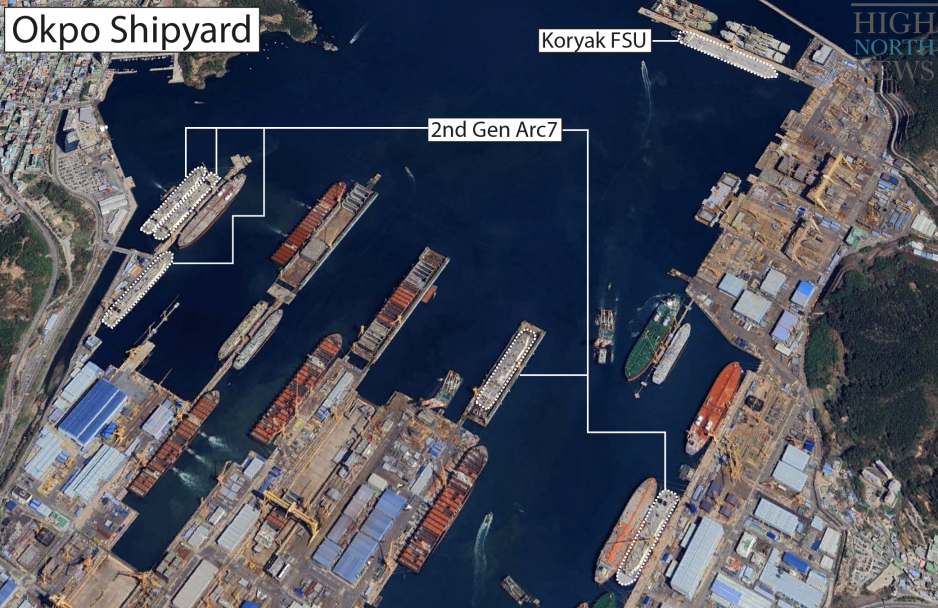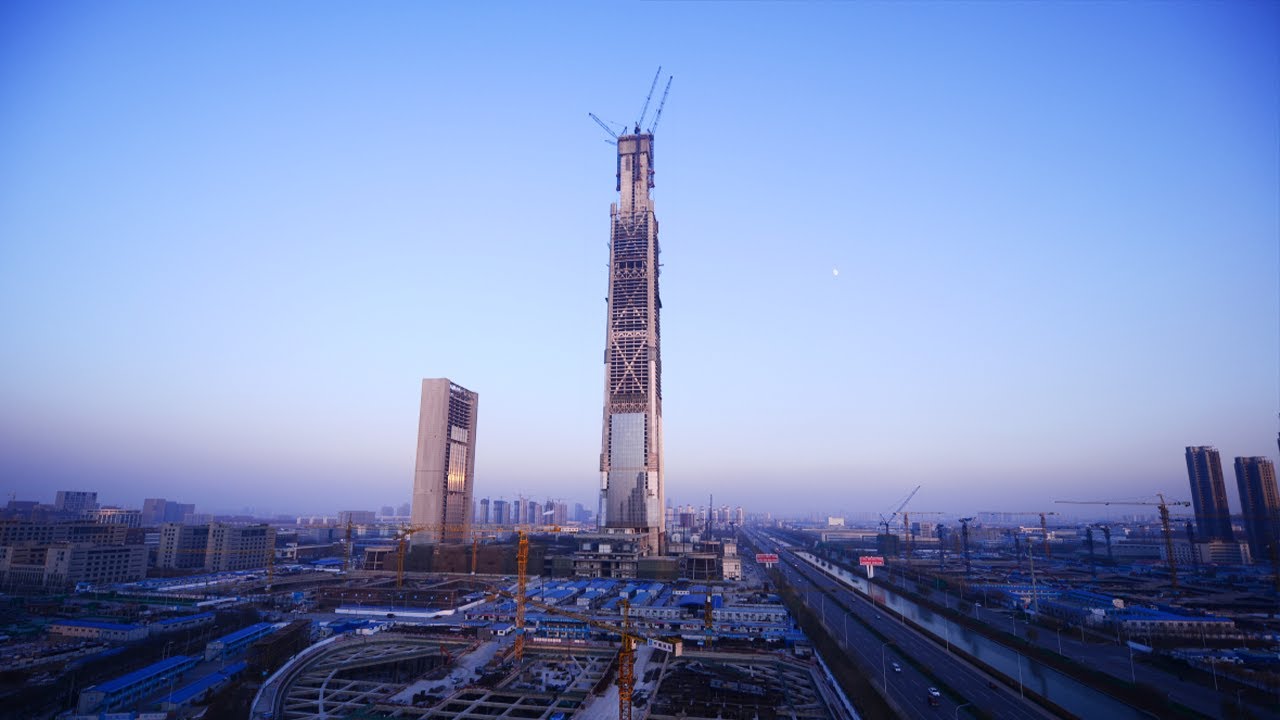The Continuing Supply Chain: European Shipyards And Russian Arctic Gas

Table of Contents
The Role of European Shipyards in Arctic Gas Extraction
The extraction and transportation of Russian Arctic gas rely heavily on specialized vessels capable of navigating the harsh Arctic conditions. This is where European shipyards play a crucial role.
Specialized Vessels:
Building vessels for Arctic operations presents unique challenges. The extreme cold, ice floes, and remote locations demand specialized designs and robust construction.
- Arc7 icebreakers: These powerful vessels, capable of navigating even the thickest ice, are essential for opening shipping lanes and supporting offshore platforms. Their construction requires advanced materials, sophisticated engineering, and meticulous testing.
- LNG carriers: These specialized tankers transport liquefied natural gas (LNG) from extraction sites to global markets. Their design must account for the challenges of Arctic navigation and the safe handling of LNG.
- Support vessels: A range of other vessels, including supply ships and research vessels, are crucial for supporting Arctic gas operations. These also require specialized capabilities to withstand the harsh environment.
The expertise needed to build these specialized vessels is concentrated in European shipyards, particularly in countries with a long history of Arctic exploration and shipbuilding. Shipyards in Finland, Norway, and other European nations possess the specialized knowledge and infrastructure to undertake these complex projects. Companies like Aker Solutions and Meyer Turku have been involved in past projects, demonstrating the region's significant contribution to this Russian Arctic gas supply chain. The challenges include sourcing specialized steel alloys resistant to extreme cold and designing hulls capable of withstanding immense ice pressure. Rigorous testing procedures are employed to ensure the vessels' reliability and safety in these challenging conditions.
Maintenance and Repair:
Maintaining and repairing Arctic vessels is equally challenging. The remote locations and harsh conditions necessitate specialized facilities and expertise.
- Logistical challenges: Repairing a damaged vessel in the Arctic is a complex and expensive undertaking, often requiring specialized equipment and personnel to be transported to remote locations.
- Specialized facilities: European shipyards offer the necessary infrastructure and skilled workforce for both routine maintenance and emergency repairs. This proximity is crucial for efficient turnaround times.
- Economic benefits: Maintenance and repair contracts generate substantial revenue for European shipyards, providing economic incentives for maintaining this specialized expertise.
The geopolitical implications of this reliance are significant. European shipyards’ role in maintaining the functionality of Russian Arctic gas operations creates a degree of interdependence that adds to the complexity of the geopolitical landscape.
Geopolitical Implications of the Russian Arctic Gas Supply Chain
The ongoing conflict in Ukraine and subsequent sanctions have profoundly impacted the Russian Arctic gas supply chain.
Sanctions and Alternatives:
Western sanctions have limited Russia's access to crucial technologies and financing for Arctic gas projects.
- Technological restrictions: Sanctions have hampered the import of advanced equipment and technologies needed for efficient gas extraction and transportation.
- Financial constraints: Restrictions on access to international finance have made it difficult for Russia to fund its ambitious Arctic gas projects.
- Alternative sources: The disruptions have spurred efforts by other countries, particularly in the Middle East and North America, to increase their LNG production and supply to Europe, seeking to lessen dependence on Russian gas.
This has led to delays and cancellations of some projects, creating uncertainty in the market and highlighting the vulnerability of relying on a single major supplier. It also fuels a push towards faster adoption of renewable energy sources within Europe.
Energy Security and Diversification:
The dependence on Russian gas has highlighted the importance of energy security and diversification for Europe.
- Energy diversification: European countries are actively seeking to diversify their energy sources, reducing their reliance on a single supplier and strengthening their energy independence.
- Alternative energy sources: Investments in renewable energy sources, such as wind, solar, and hydropower, are increasing, aiming to reduce reliance on fossil fuels.
- LNG imports: Europe is also increasing its imports of LNG from other sources, particularly from the US, Qatar, and other LNG-exporting countries.
Securing reliable and diverse gas supply routes is critical for Europe's economic stability and political influence.
Environmental Concerns and Sustainable Practices
The extraction and transportation of Arctic gas raise significant environmental concerns.
Environmental Impact of Arctic Gas Extraction:
Arctic gas extraction carries substantial environmental risks.
- Methane emissions: Methane, a potent greenhouse gas, can be released during gas extraction and transportation, exacerbating climate change.
- Biodiversity loss: The Arctic ecosystem is highly sensitive, and gas extraction activities can disrupt fragile habitats and endanger wildlife.
- Oil spills: The risk of oil spills during transportation presents a serious threat to the Arctic environment.
International regulations and environmental standards aim to mitigate these risks, but their enforcement and effectiveness remain a critical concern.
Sustainable Shipbuilding Technologies:
European shipyards are at the forefront of developing eco-friendly shipbuilding technologies.
- Sustainable materials: The use of recycled materials and bio-based composites is gaining traction in shipbuilding, reducing the environmental footprint.
- Energy-efficient designs: Innovations in hull design and propulsion systems are improving fuel efficiency and reducing emissions.
- Emission reduction technologies: The adoption of cleaner fuels and emission control technologies is crucial for minimizing the environmental impact of Arctic shipping.
Incentives and regulations promoting sustainable shipbuilding practices in Europe are driving innovation and positioning the region as a leader in environmentally responsible Arctic shipping.
Conclusion
The future of the Russian Arctic gas supply chain remains uncertain, significantly impacted by geopolitical tensions and environmental concerns. While European shipyards hold considerable expertise in building and maintaining the specialized vessels needed for Arctic operations, the current climate necessitates a diversification of energy sources and a strong focus on sustainability. Understanding the intricacies of this complex Russian Arctic gas supply chain is critical for navigating the evolving energy landscape and ensuring a secure and sustainable energy future for Europe. Further research into alternative energy sources and sustainable shipbuilding practices is crucial to secure a stable future beyond reliance on this specific supply chain. Investing in renewable energy and exploring alternative Russian Arctic gas supply chain solutions is paramount for a resilient energy future.

Featured Posts
-
 Todays Stock Market Analyzing Dow Futures And Chinas Economic Policies
Apr 26, 2025
Todays Stock Market Analyzing Dow Futures And Chinas Economic Policies
Apr 26, 2025 -
 American Cyclist Jorgenson Victorious At Paris Nice
Apr 26, 2025
American Cyclist Jorgenson Victorious At Paris Nice
Apr 26, 2025 -
 Gavin Newsoms Transgender Athlete Policy Unfair Or Necessary
Apr 26, 2025
Gavin Newsoms Transgender Athlete Policy Unfair Or Necessary
Apr 26, 2025 -
 Benson Boones I Heart Radio Music Awards 2025 Outfit Photo 5137823
Apr 26, 2025
Benson Boones I Heart Radio Music Awards 2025 Outfit Photo 5137823
Apr 26, 2025 -
 Stockholm Stadshotell Krogkommissionens Omdoeme Och Vart
Apr 26, 2025
Stockholm Stadshotell Krogkommissionens Omdoeme Och Vart
Apr 26, 2025
Latest Posts
-
 Resumption Of Construction Worlds Tallest Abandoned Skyscraper Project
Apr 26, 2025
Resumption Of Construction Worlds Tallest Abandoned Skyscraper Project
Apr 26, 2025 -
 Construction To Restart On Worlds Tallest Abandoned Skyscraper
Apr 26, 2025
Construction To Restart On Worlds Tallest Abandoned Skyscraper
Apr 26, 2025 -
 Worlds Tallest Abandoned Skyscraper Construction Resumes After 10 Year Hiatus
Apr 26, 2025
Worlds Tallest Abandoned Skyscraper Construction Resumes After 10 Year Hiatus
Apr 26, 2025 -
 Florida A Cnn Anchors Guide To An Unforgettable Trip
Apr 26, 2025
Florida A Cnn Anchors Guide To An Unforgettable Trip
Apr 26, 2025 -
 The Worlds Richest Man An American Battleground
Apr 26, 2025
The Worlds Richest Man An American Battleground
Apr 26, 2025
